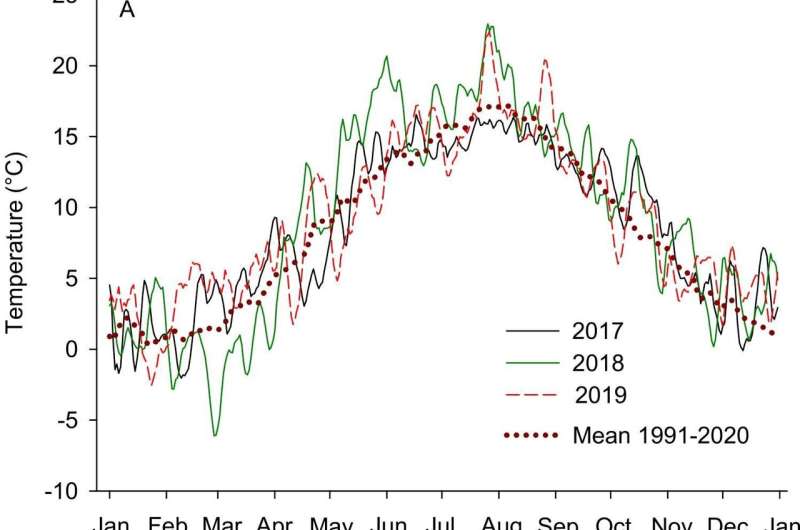This article has been reviewed according to Science X's editorial process and policies. Editors have highlighted the following attributes while ensuring the content's credibility:
fact-checked
trusted source
proofread
One step closer to optimal fertilization of clover grass

Clover-grass mixtures are popular because they do not need to be fertilized as much as pure grass crops. Indeed, legumes such as white and red clover are self-sufficient in nitrogen. They can simply fix nitrogen from the atmosphere and fix part of the nitrogen in the soil. In this way, they can actually also provide nutrients for the grasses that also form part of the field's plant community.
"Because legumes are nitrogen-fixing, fertilizing your clover grass optimally can be complex. This is true for both organic and conventional farmers, because the more fertilizer you apply the less clover there will be, the grass simply out-grow the clover. In popular terms, you're fertilizing the clover away," explains postdoc Henrik Thers from the Department of Agroecology at Aarhus University.
This is problematic because the less clover, the less nitrogen is fixed.
Organic experiments with cattle manure
Researchers from Aarhus University have conducted organic fertilization trials of clover grass fields to find the optimal fertilization in relation to field yield, proportion of clover, protein concentration and, not least, nitrogen fixation. Therefore, the chosen fertilizer has been cattle slurry.
"In total, we had four fertilization levels in this trial. We have fertilized with 0, 100, 200 and 300 kg total N per ha in cattle slurry. If you look at the dry matter yield, there is a significant increase in yield up to 200 kg N. There is also a small increase at 300 kg N, but it is not significant. Therefore, we conclude that 200 kg N is the most optimal in terms of yield," says Henrik Thers.
So, unless you're a cattle farmer with unlimited manure, you should give the 200 kg N to clover grass and save the rest for other fields.
"We have also studied the quality of the yield and we can see that you don't actually get a better quality when you fertilize, on the other hand you don't get a significantly worse one either, so you shouldn't be afraid to fertilize your clover grass," says Henrik Thers.
Autumn tattle about spring
Clover grass is fertilized several times a year, and often the fertilizer will be adjusted to the proportion of clover. So, it is problematic that the first fertilization of the year is applied so early that the farmer can't assess the proportion of clover in his field. Researchers now have a solution to this problem.
"Of course, it would be most optimal if you could measure the proportion using specially made cameras, but this is not possible at the beginning of the season because the clover plants are simply too small. We've found that you can use the images from the autumn to tell you something about how much clover there will be next spring," says Henrik Thers.
The research shows that if you have a clover percentage in the autumn that is between 33-75%, then there is a reliable correlation to the clover percentage the following spring. However, the proportion will be some percentage points lower. In this way, you know what the clover percentage will be even before the clover percentage can be measured, and this allows you to adjust fertilization.
Enough data for a fertilization model
Like previous studies, the results of the new trials also establish that at the high fertilization levels, a lower percentage of clover will be found than at the lower fertilization levels.
"So, it's true that you can fertilize the clover away. That's why it would be a good idea to create a model for optimal fertilization of organic clover grass. If you are going to do such a model, you need to know what happens when you fertilize clover grass with different amounts of slurry. We now have this data," says Henrik Thers, who hopes that the study will contribute to more optimal fertilization of clover grass.
The findings are published in the journal Field Crops Research.
More information: Henrik Thers et al, Grass-clover response to cattle slurry N-rates: Yield, clover proportion, protein concentration and estimated N2-fixation, Field Crops Research (2022). DOI: 10.1016/j.fcr.2022.108675
Provided by Aarhus University



















